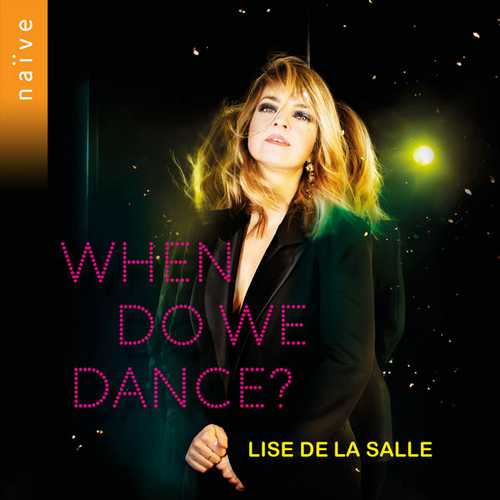
Composer: Béla Bartók, William Bolcom, Claude Debussy, Manuel de Falla, George Gershwin, Alberto Ginastera, Astor Piazzólla, Sergey Rachmaninov, Maurice Ravel, Camille Saint-Saëns, Alexander Scriabin, Igor Stravinsky, Art Tatum, Thomas Waller
Performer: Lise de la Salle
Format: FLAC (tracks)
Label: Naïve
Release: 2021
Size: 1.22 GB
Recovery: +3%
Scan: yes
01. When Do We Dance?
02. Tea for Two
03. Three Ghosts Rags: No. 1, Graceful Ghost Rag
04. Vipers Drag
05. Libertango
06. Danzas argentinas, Op. 2: No. 1, Danza del viejo boyero
07. Danzas argentinas, Op. 2: No. 2, Danza de la moza donosa
08. Danzas argentinas, Op. 2: No. 3, Danza del gaucho matrero
09. El amor brujo: No. 8, Danza ritual del fuego
10. Valses nobles et sentimentales, M. 61: No. 1, Modéré, très franc
11. Valses nobles et sentimentales, M. 61: No. 2, Assez lent, avec une expression intense
12. Valses nobles et sentimentales, M. 61: No. 3, Modéré
13. Valses nobles et sentimentales, M. 61: No. 4, Assez animé
14. Valses nobles et sentimentales, M. 61: No. 5, Presque lent, dans un sentiment intime
15. Valses nobles et sentimentales, M. 61: No. 6, Vif
16. Valses nobles et sentimentales, M. 61: No. 7, Moins vif
17. Valses nobles et sentimentales, M. 61: No. 8, Épilogue. Lent
18. Six Etudes, Op. 52: No. 6, Etude en forme de valse
19. Mazurka, L. 67
20. Romanian Folk Dances, Sz. 56: No. 1, Stick Dance. Allegro moderato
21. Romanian Folk Dances, Sz. 56: No. 2, Sash Dance. Allegro
22. Romanian Folk Dances, Sz. 56: No. 3, In One Spot. Andante
23. Romanian Folk Dances, Sz. 56: No. 4, Dance from Bucsum. Moderato
24. Romanian Folk Dances, Sz. 56: No. 5, Romanian Polka. Allegro
25. Romanian Folk Dances, Sz. 56: No. 6, Fast Dance. Allegro
26. Tango
27. Waltz in A-Flat Major, Op. 38
28. Polka italienne in E-Flat Major, TN ii/21
Four years after her boundary-breaking album “Bach Unlimited”, pianist Lise de la Salle presents an extremely personal odyssey inspired by her love of the dance and her fascination with the period 1850 to 1950.
More than just a question, Lise de la Salle’s “When do we dance?” is an invitation to a voyage, “one that explores the different ways in which dance takes possession of the body”. A voyage in time, through a whole century (1850-1950) with the accent on modernity; a voyage over the oceans, from North America to Eastern Europe, criss-crossing Argentina, Spain, France, Hungary and Russia; a voyage to the very core of rhythm, that essential anchor point for the dance as for music in general, that enlivens the ragtimes of Gershwin and Bolcom, Bartók’s folk dances, a waltz by Saint-Saëns and a tango by Stravinsky.
Pursuing her synchronic route with radiant versatility, the French pianist moves freely around the globe, encompassing diverse cultures with as much poetry as virtuosity, by turns setting the piano aflame with sensuality in Ginastera’s Argentine Dances, making it sound impishly seductive in 1930s swing, exquisitely refined in Ravel’s Valses nobles et sentimentales, or powerfully romantic in a Waltz by Scriabin. There are evergreens, such as Art Tatum’s take on Tea for Two, Gershwin’s When Do We Dance? and the Ritual Fire Dance by de Falla. There are also several less familiar pieces to discover: Stravinsky’s Tango, Rachmaninoff’s Polka italienne, and the Étude en forme de valse by Saint-Saëns.
As a luminous pendant to this amazing multi-journey to thefour corners of the globe, we can read a declaration of love: Lise de la Salle’s own tribute to the art of the dance that has forever fascinated her. To her own wonderment, at the piano she finds dance simply flowing through her, and she is constantly learning from it. This pianist for whom “dance is a pleasure to be shared with others” here divulges its secrets.